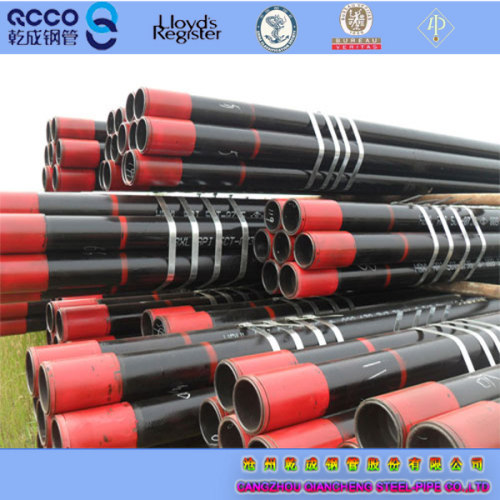For gas pipeline, internal deterioration is the electrochemical reaction of residual water and acid gas in the pipeline similar to galvanic cell and the chemical reactions that ruin the steel latticework. Both of these reactions cause the pipe wall to loosen, diminish and also pierce, which can no longer endure the stress of gas in the pipeline. In useful application, a kind of layer can not be excellent security, or can not meet the demand such as anti-corrosion, climate resistance, great look, and also as a result most a number of coating on metal surface finishing work together to create a whole system, including primer layer, the center layer, paint, finishing one or a number of times each layer respectively as required, and also there is just solitary layer such as powder layers can meet the different needs at the same time.
The anti-corrosion covering of gas pipe should have the adhering to residential or commercial properties: efficient electric as well as water insulation; Not limited by finish techniques; Good attachment to pipe surface area; Resistant to harm throughout installation, storage space and transport; Resistance to chemical medium damage; Easy to fix; Long service; Environmentally pleasant and also safe. Currently, the anti-corrosion layers for far away transportation pipes mostly include coal tar paint, 2LPE, 3LPE, merged epoxy powder (FBE), and also double-layer fused epoxy powder (FBE double-layer) layer.
Coal tar enamel.
Coal tar paint finish is the very early pre-owned covering, it's characterized by excellent insulation efficiency, low water absorption, resistance to microbial corrosion as well as plant root penetration, long life span as well as low price. Nonetheless, its mechanical stamina is reduced and also has a little appropriate temperature variety, it might leave poisonous gases and also requires strict smoke treatment. In recent times, it has been progressively replaced by other covering layers as a result of the constraint of environmental protection.
2LPE.
2LPE has good insulation efficiency, low water absorption, high mechanical toughness, difficult wear resistance, acid, antacids, salt and microbial deterioration, temperature adjustment resistance.
Nonetheless, there are also disadvantages: easy aging, poor adhesion with the steel tube surface, bad anti-cathodic removing performance. Electrostatic protecting of PE layer is not conducive to outside present cathodic defense.
3LPE.
The 3 layers of PE anti-corrosion layer integrate the advantages of high density polyethylene and fused epoxy powder. The epoxy powder is securely combined with the surface area of the steel pipeline, and the high thickness polyethylene is immune to mechanical damages. The sticky layer in between the two layers makes the 3 type a composite structure of molecular bond, which recognizes the excellent mix of corrosion resistance and also mechanical properties. It is the front runner for large natural gas transport pipeline design.
Combination adhered epoxy powder (FBE).
The PBE finish WLDSTEEL INC. has strong bonding with the surface area of the steel pipe, excellent insulation performance, high mechanical stamina, temperature level adjustment resistance as well as chemical deterioration resistance, as well as can be utilized in a range of severe settings. The major disadvantage is poor ultraviolet resistance and the thin overburden layer (0.35 ~ 0.50 mm). The double-layer FBE resembles 3PE, with great compatibility, smooth surface of the covering layer, which can stay clear of cathodic securing.

So, how does the finish shield the internal wall of the gas pipeline? We currently recognize that metal corrosion results from the activity of the environmental medium on the steel surface area to produce electrochemical reaction or chemical reaction, the effect of the finish on the pipeline is accomplished by preventing the above responses:.
( 1) Shielding: Many layers on acid, antacids, salt as well as various other harsh media reveal chemical inertia, and also the high dielectric consistent to stop the formation of deterioration circuit, so the metal surface area coating to the steel surface area as well as the atmosphere isolation and also securing the corrosive tool. It needs to be mentioned that the polymer layer is breathable as well as very closely pertaining to its structure.
( 2) Passivation slow-moving release: With the help of antirust pigment in the coating as well as the metal surface area reaction, make it passivation or generate protective materials; In addition, many oils can also work as organic corrosion inhibitors by creating deterioration products under the catalytic activity of metal soaps.
( 3) Electrochemical defense: The layer possibility is less than iron steel filler (such as zinc) will certainly sacrifice the cathodic protection of the anode, and the atmospheric rust products of zinc alkali zinc carbonate is reasonably secure, can be shut, plug the final gap.
So exactly how to stop the corrosion of the internal wall surface of the gas pipe? We can prevent by doing this: to start with, the gas drawn out from the ground experiences a series of processes such as desulphurization and dehydration, before it goes into the long-distance pipeline. Second of all, the efficient inner finish of the pipeline can reduce deterioration, gas transmission resistance and also cleansing time.



